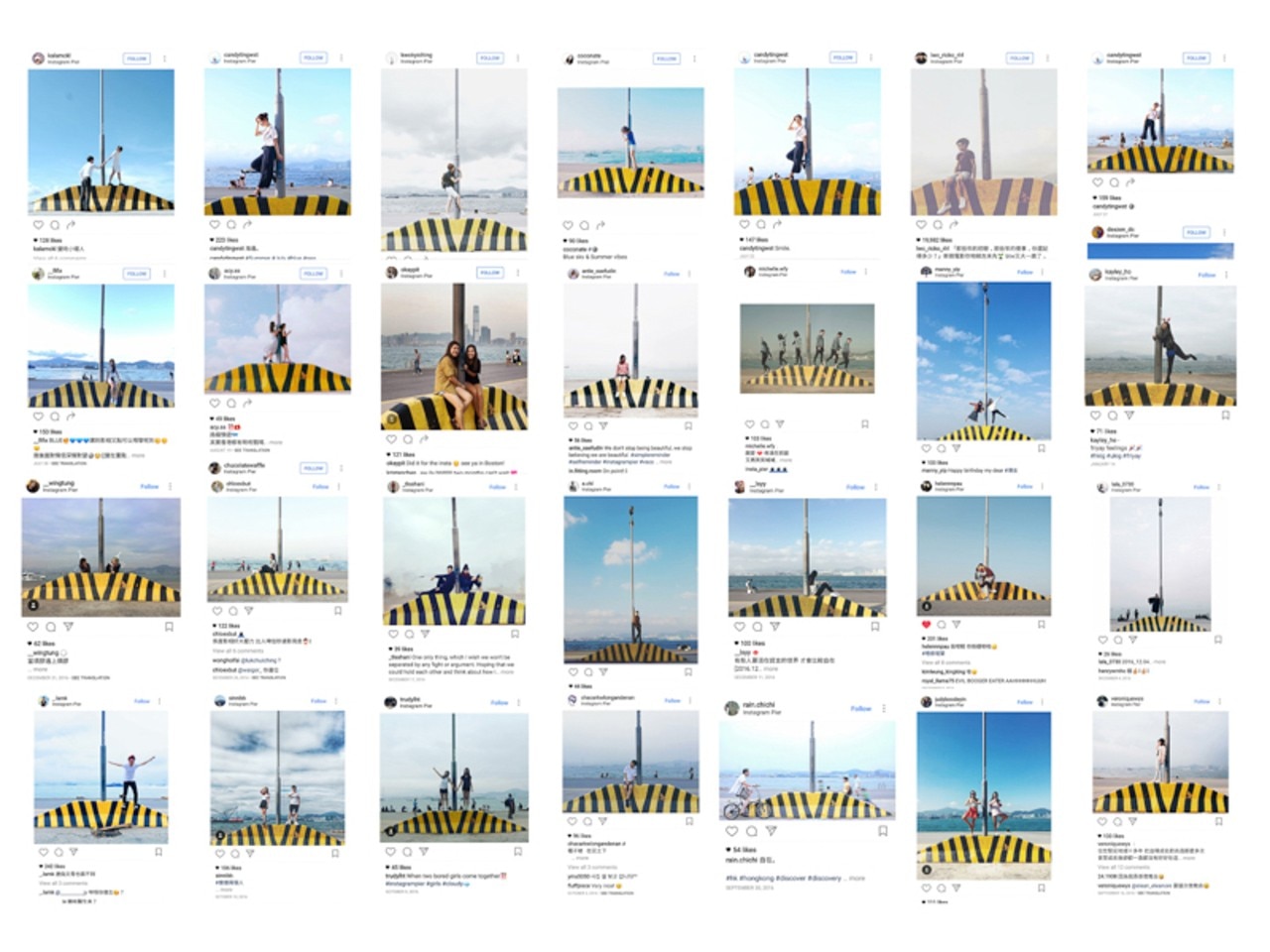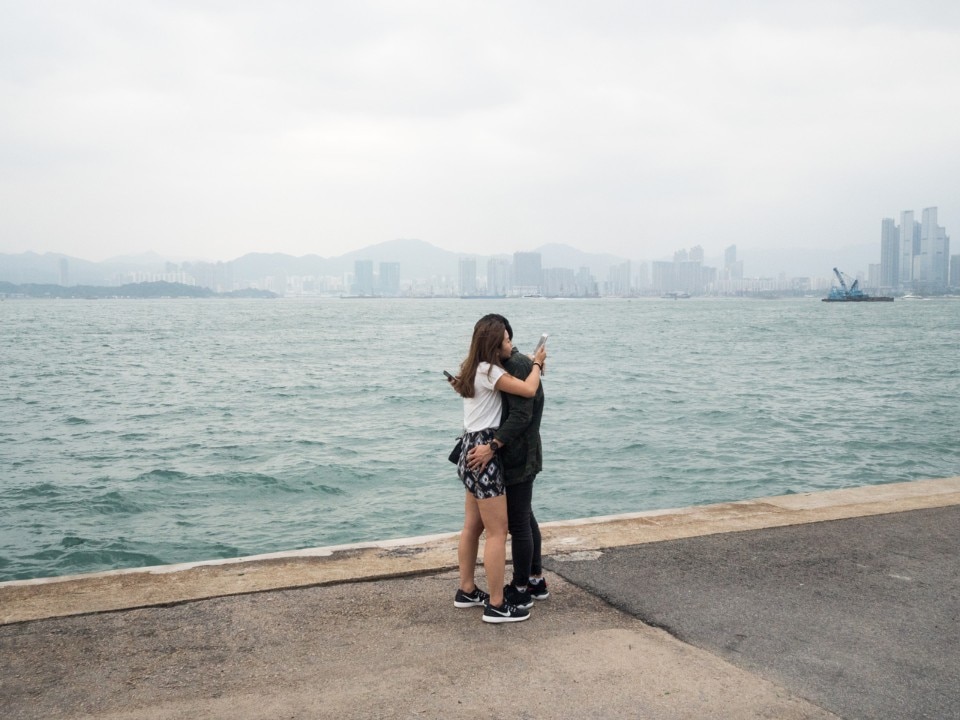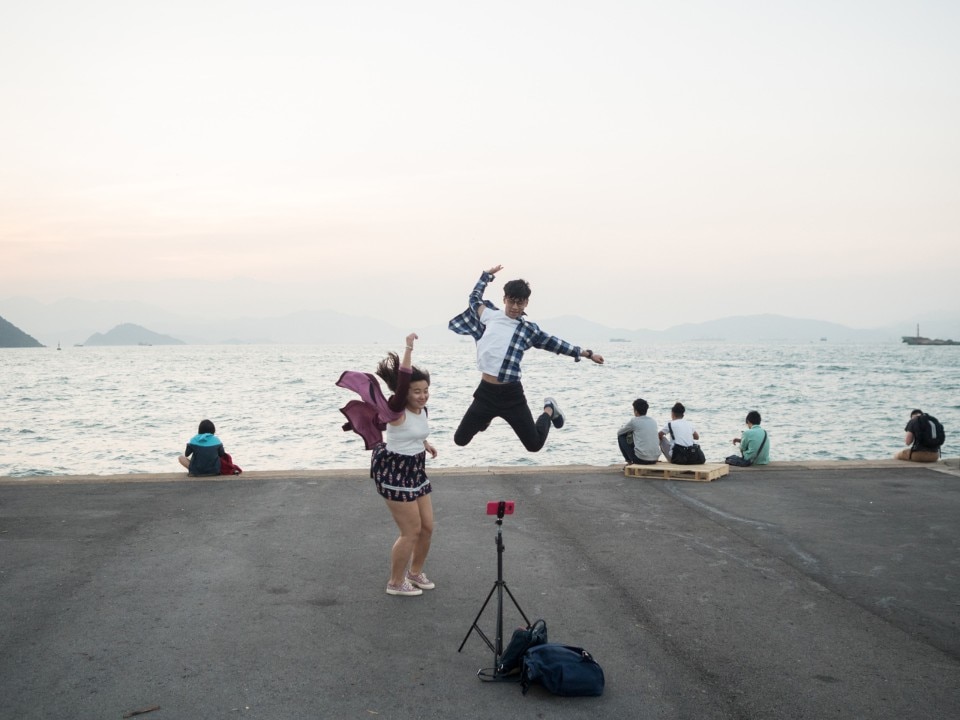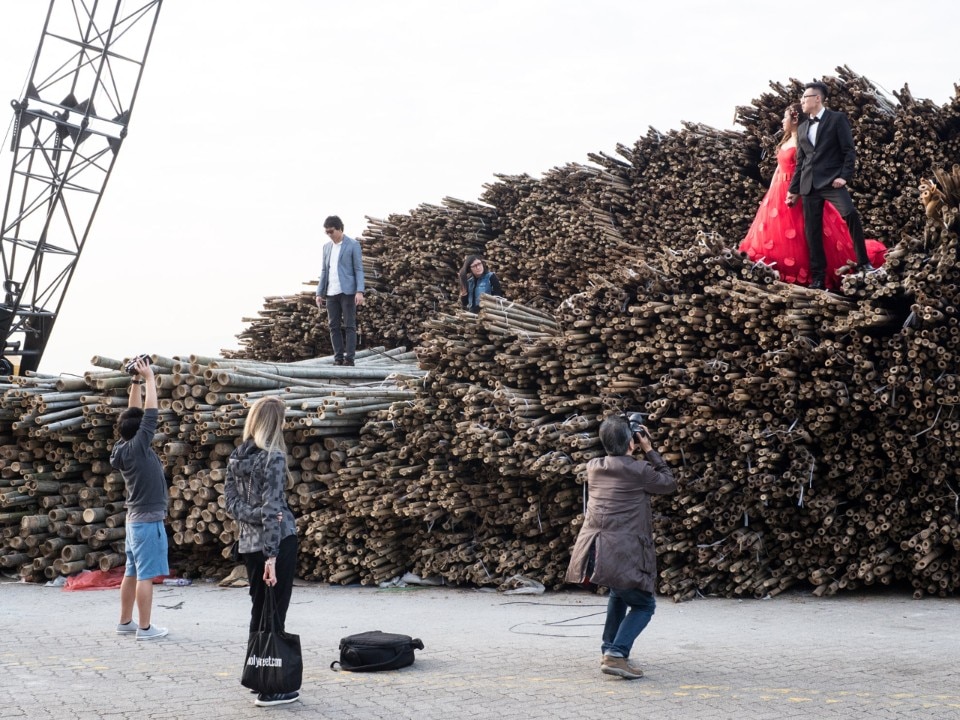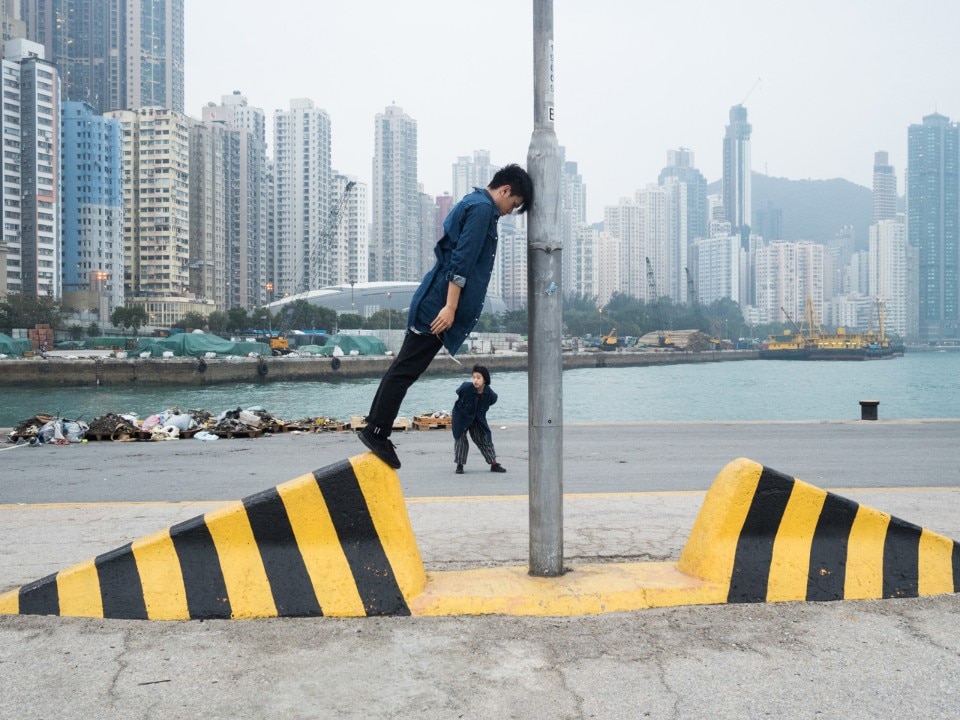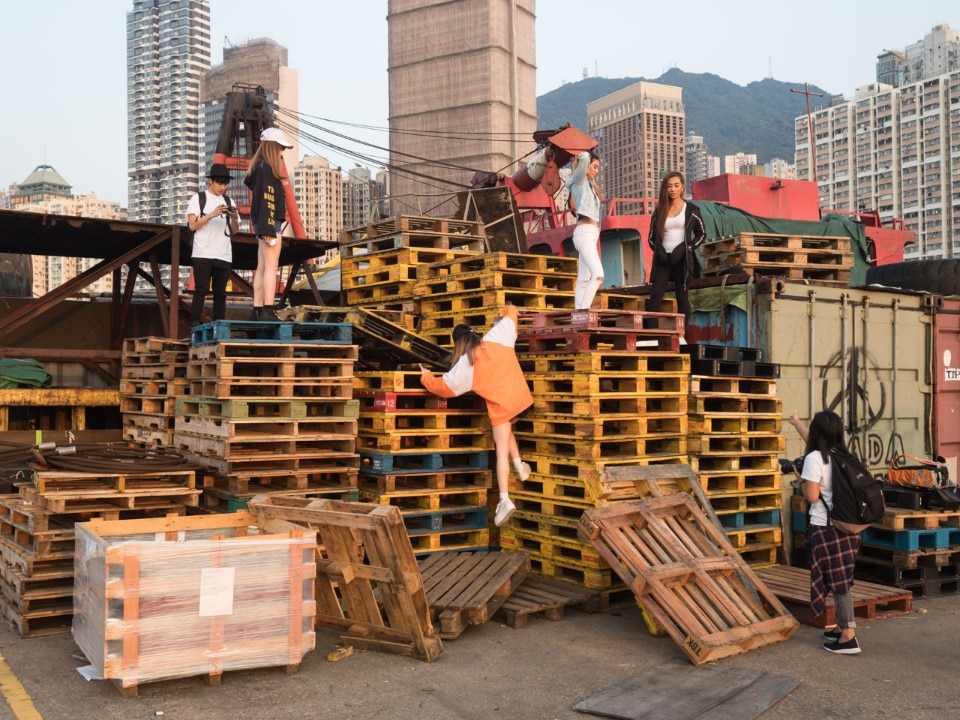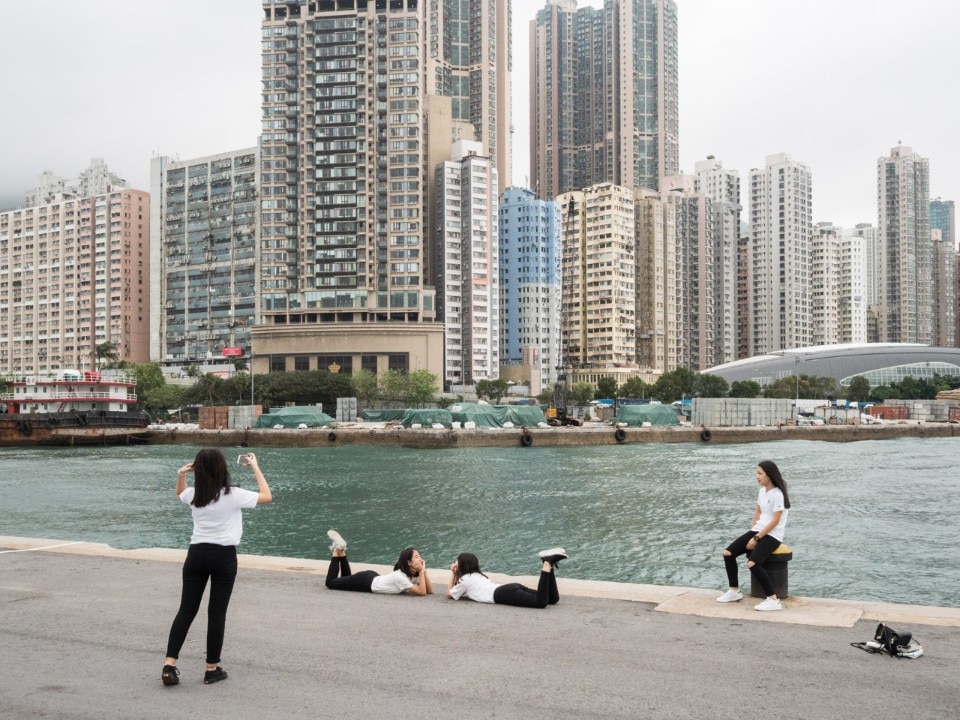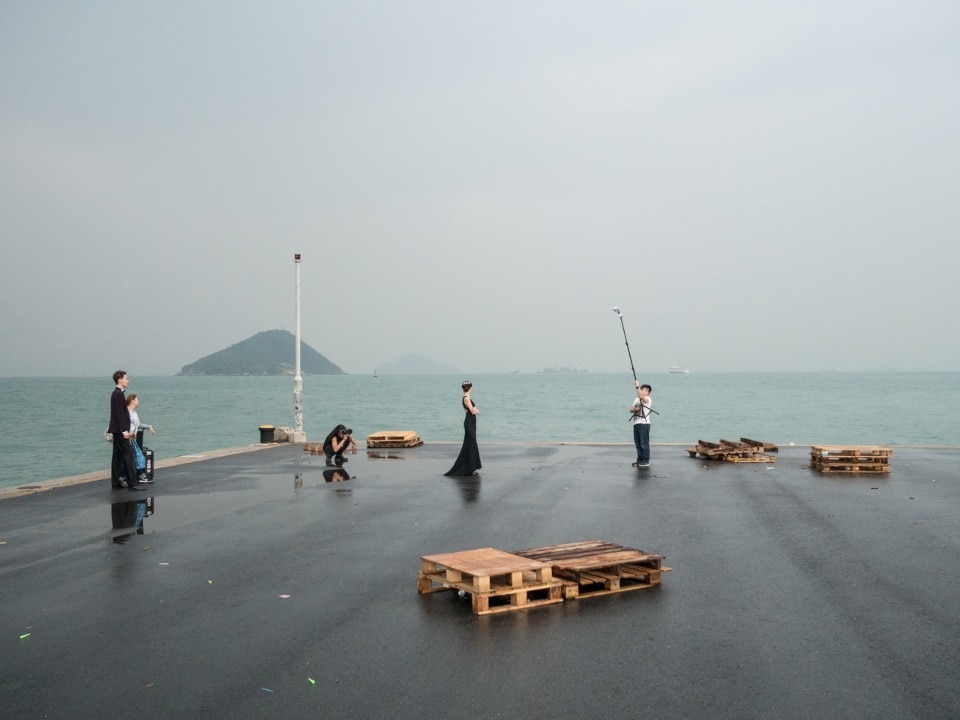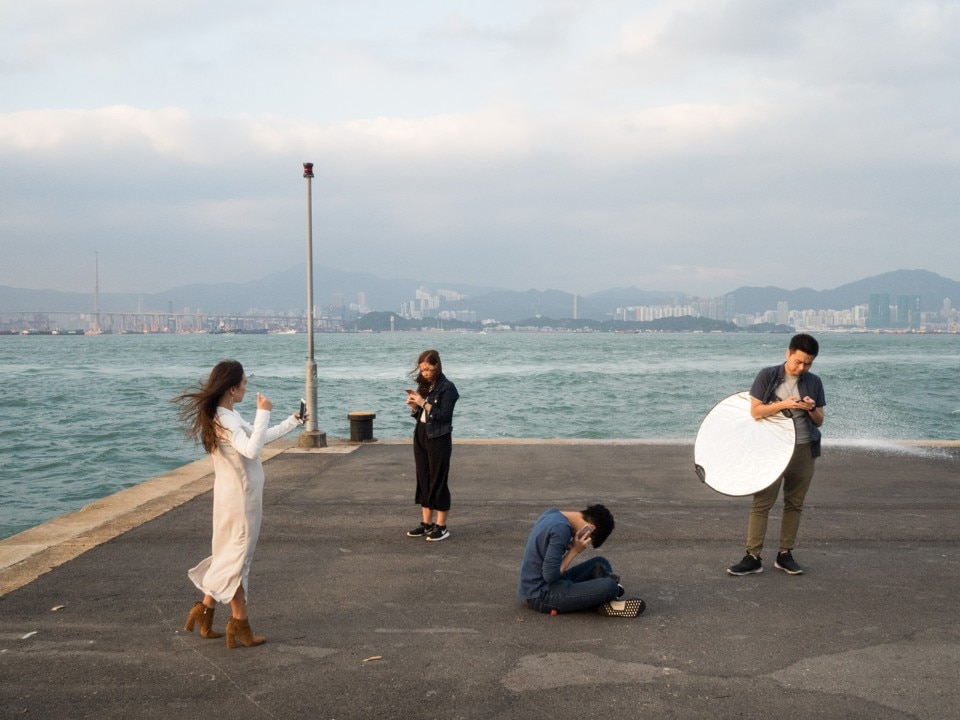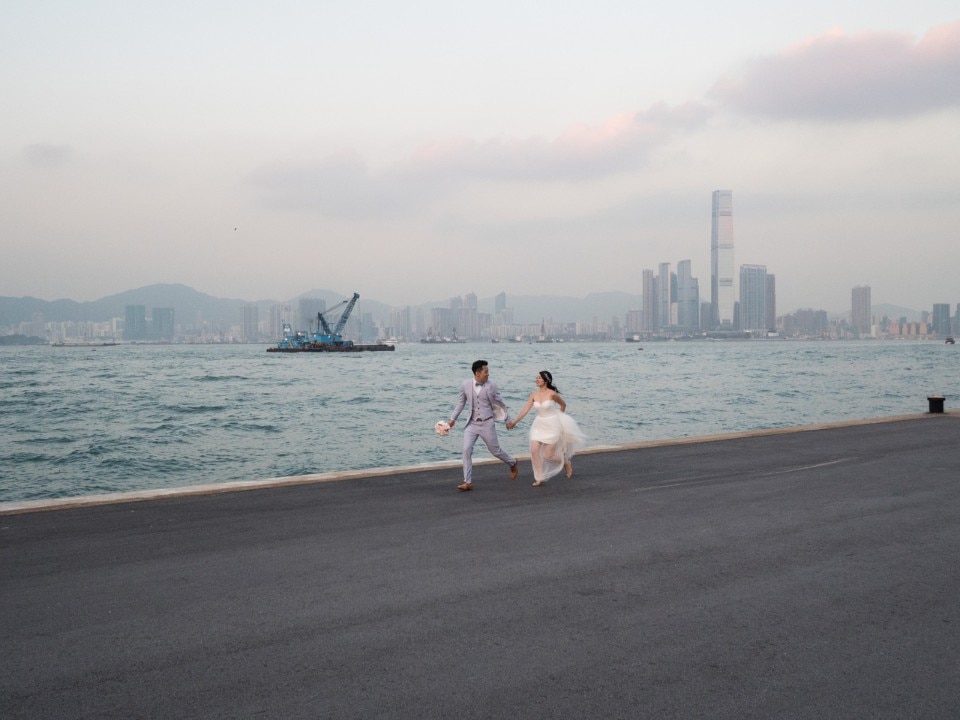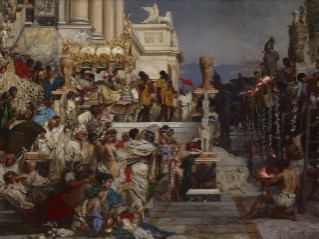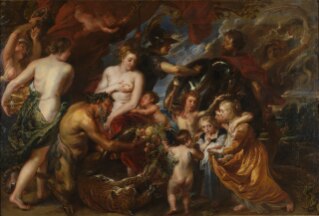The photos that run through the new book by Pierfrancesco Celada, an Italian artist who has been in Hong Kong for years, originated in 2016 on the @insta_pier feed. And, despite the lightness and apparent ease that permeate both the feed and the book, there is nothing casual behind both operations.
The “pier” that inspired Celada's project is a publicly accessible cargo ship pier in western Hong Kong and, in a case of cultural short circuit, it is commonly known as “the Instagrampier”: renowned for its photogenic characteristics, over the years it has become one of the favourite places for locals, and therefore tourists, to take photographs, unusual wedding portraits, and above all selfies perfect for Instagram, where the taste for industrial settings is combined with that for self–representation.
A bit like the most photographed barn in America, one of the most far-sighted and predictive sub-tracks (we are in 1985!) of DeLillo's White Noise, it is difficult to establish whether the attraction for this specific place has been amplified by its real peculiarities or just by the fact that it has become fashionable: that Hong Kong Pier is the most posted on Instagram simply because it is the most posted on Instagram.
It is therefore natural, but not at all obvious, that once Celada had discovered the Instagrampier, in 2016 he decided to invent its official feed, @insta_pier indeed. to become the photographer who photographs the photographers who photograph themselves, amplifying and making more complex and interesting that same short circuit that had brought him on a daily basis to that same pier where locals and tourists went every day to capture a perfect Instagram version of themselves.
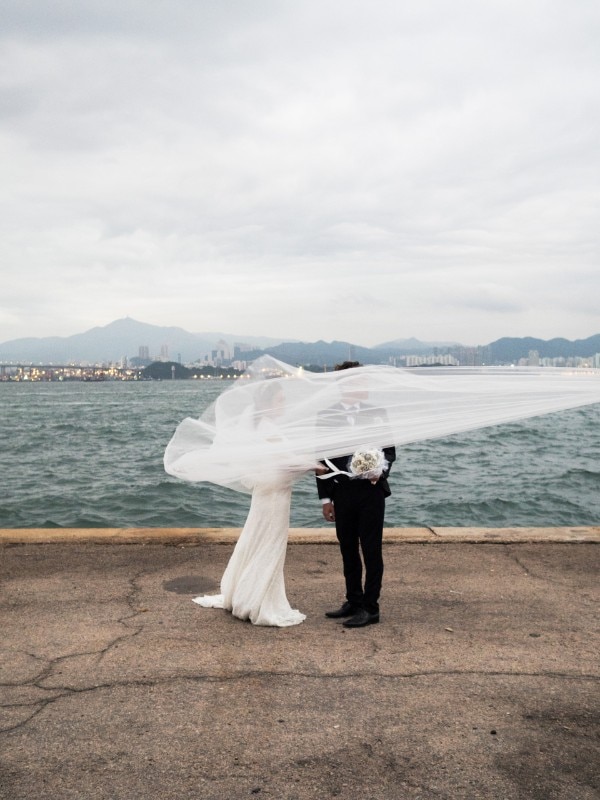
And the fact that it was Celada who did this is fortunate, for the Pier and for us, because his sharp, sly gaze renders with depth and lightness, and thus without the tare of a sociology essay or the surplus of a complicated conceptual art action, the now inveterate paradox that lies behind our need to project an image of ourselves that is as personal and at the same time canonical as possible, to distinguish ourselves by remaining part of the group, to excel without violating the unwritten rules of a new “social contract”, so to speak.
The fact that this particular case of paradox comes from Hong Kong is even more interesting: unlike some of his other works made in the former British colony, that is currently having to manage a complicated transition towards the more authoritarian logic and values of China, in Instagrampier Celada has almost completely avoided any political interpretation. This is because, as Celada himself says, “the Pier was for everyone and belongs to everyone, regardless of their political views. Even during the months of protest, the Pier was used in the same way. Despite the fact that the city was irreversibly changing, the Pier maintained its ‘playful’ function until its definitive closure, officially for pandemic measures, in March 2021”»
It's hard, however, not to see in the absolute light–heartedness with which life goes on on the Pier also a dangerous drift of guilty unawareness, where the omnivorous interest in appearances—which is fed by and which feeds social networks such as Instagram—makes us prefer an uninformed and ignorant version of ourselves. This is even more curious considering how much social networks play a role in popular movements, from the Arab Spring to Black Lives Matter, from the Greta generation to the protests in Hong Kong itself, passing from the various Occupy to the Gezi Park, just to mention some of the most representative examples.
The book was to have been published in 2019 by Peperoni Books, the very interesting Berlin–based publishing house of the late Hannes Wanderer, who gave us the most beautiful publications by Michael Wolf but who, despite a decided penchant for German authors, was also interested in Italian photography, as demonstrated by Ilaria Turba, Jacopo Benass and Celada himself. The disappearance of Wanderer just a few weeks before printing forced the project to remain as it was, but now Celada has decided to finally publish the book as Muddy Island books (available directly from the author's website), maintaining the same selection and sequence he had worked on with Wanderer but reworking the cover (which features the very first photo posted on @insta_pier) and adding emoji stickers to personalise it.
The circle therefore closes with a "definitive" version, physical and tangible, of a project born fluid, which is only one of the possible” editorial deaths” (perhaps still the best) of a simply perfect idea.


